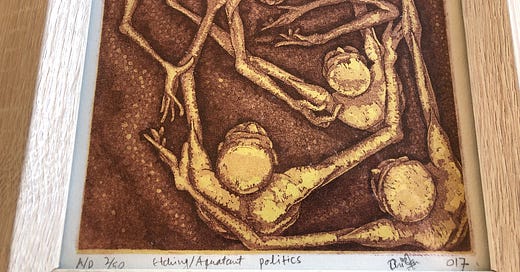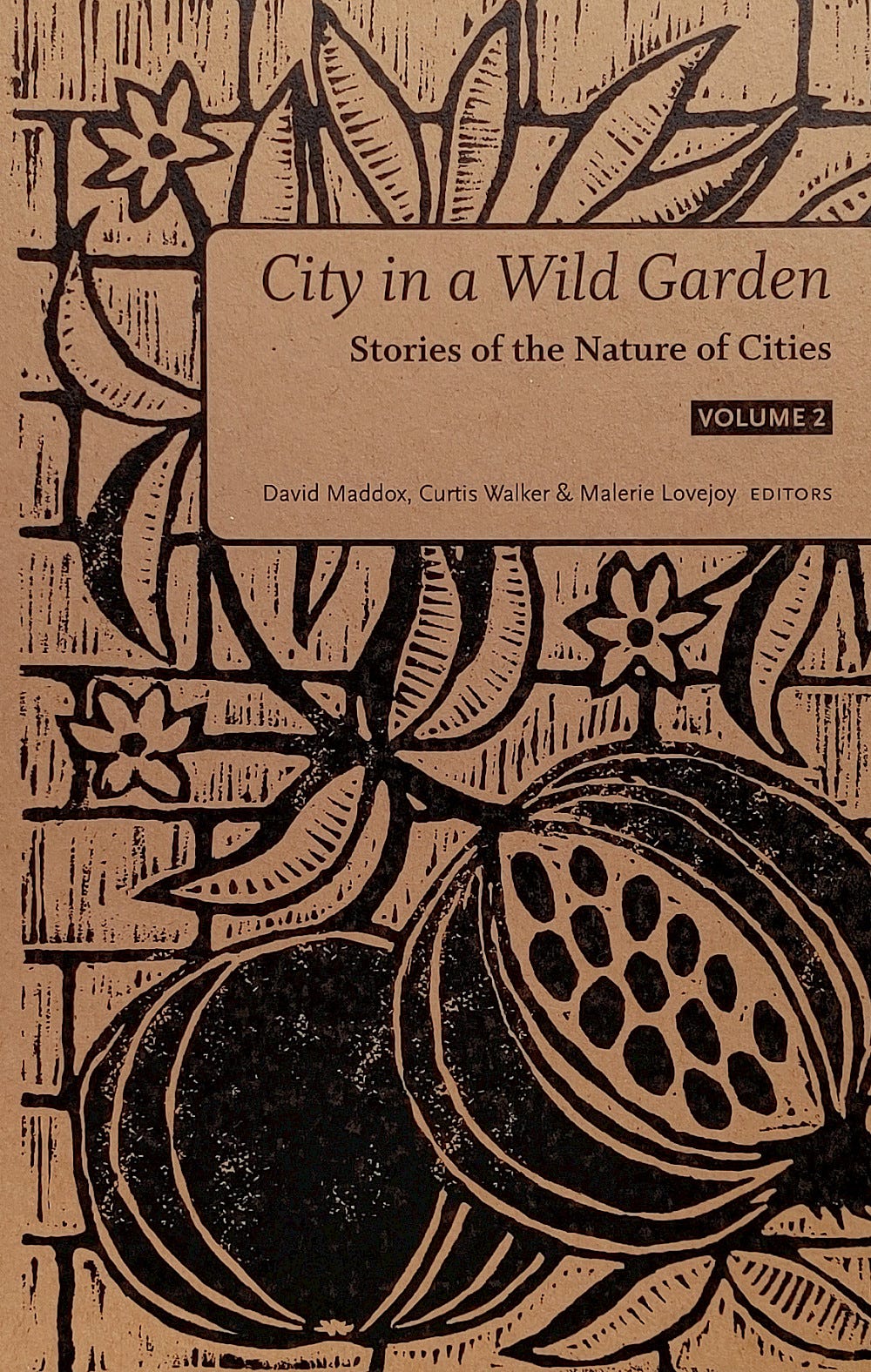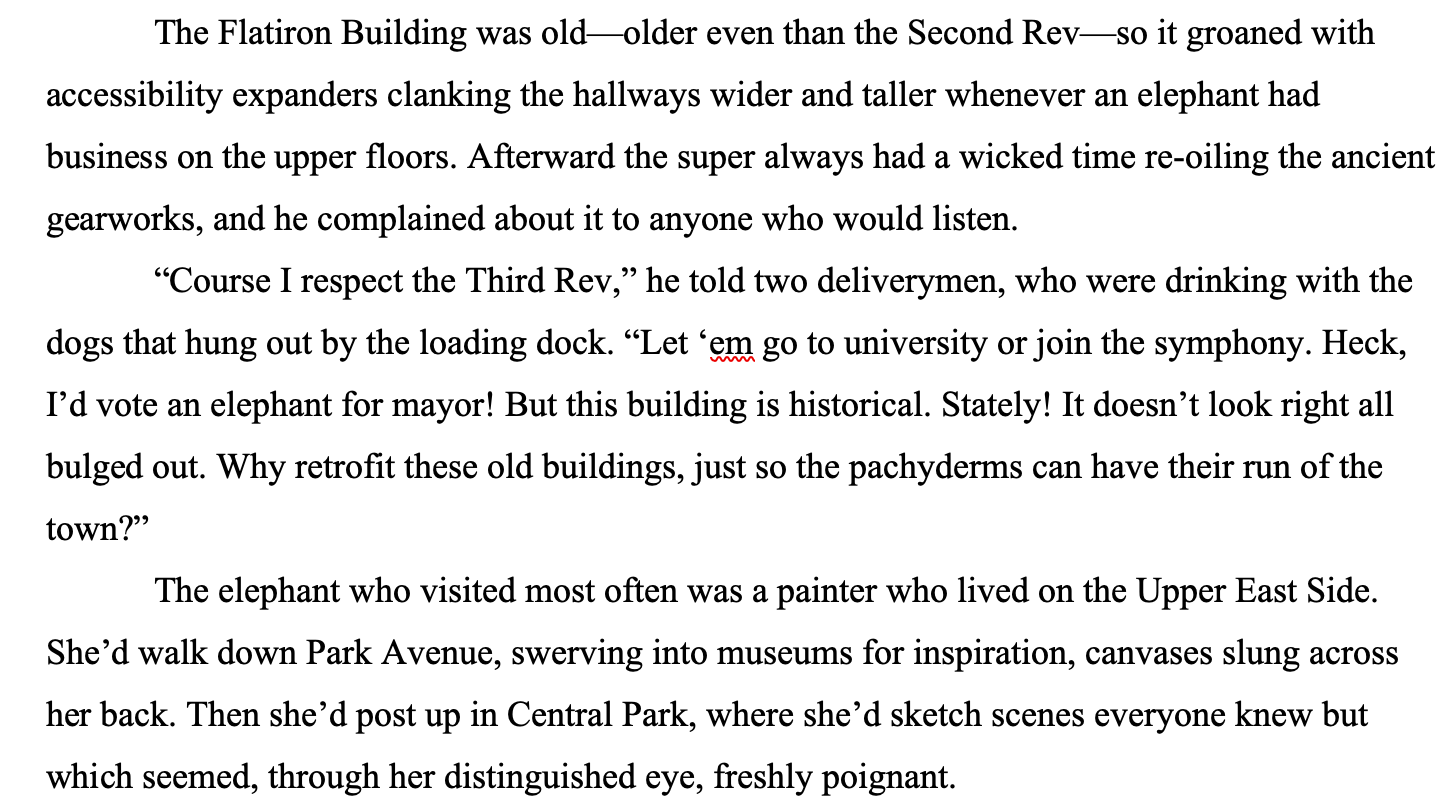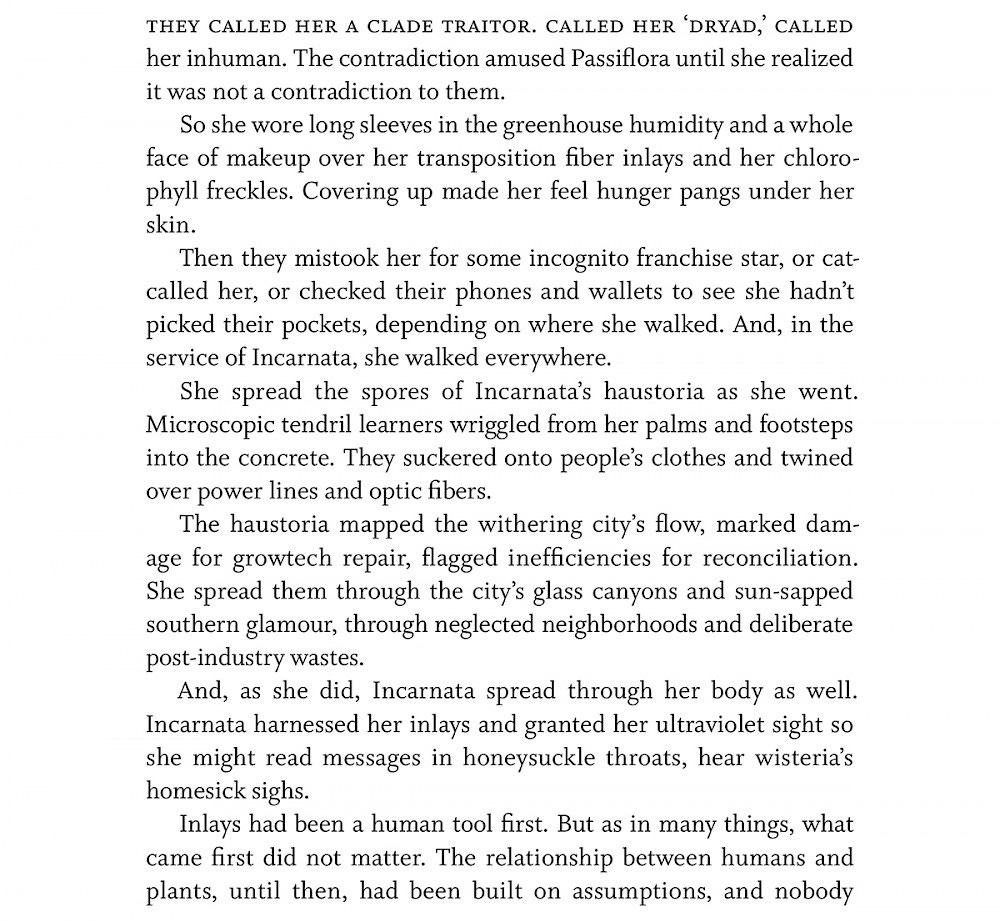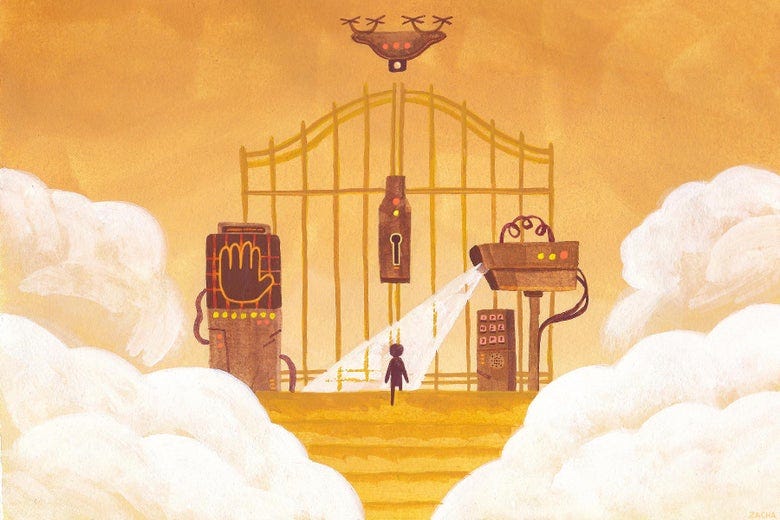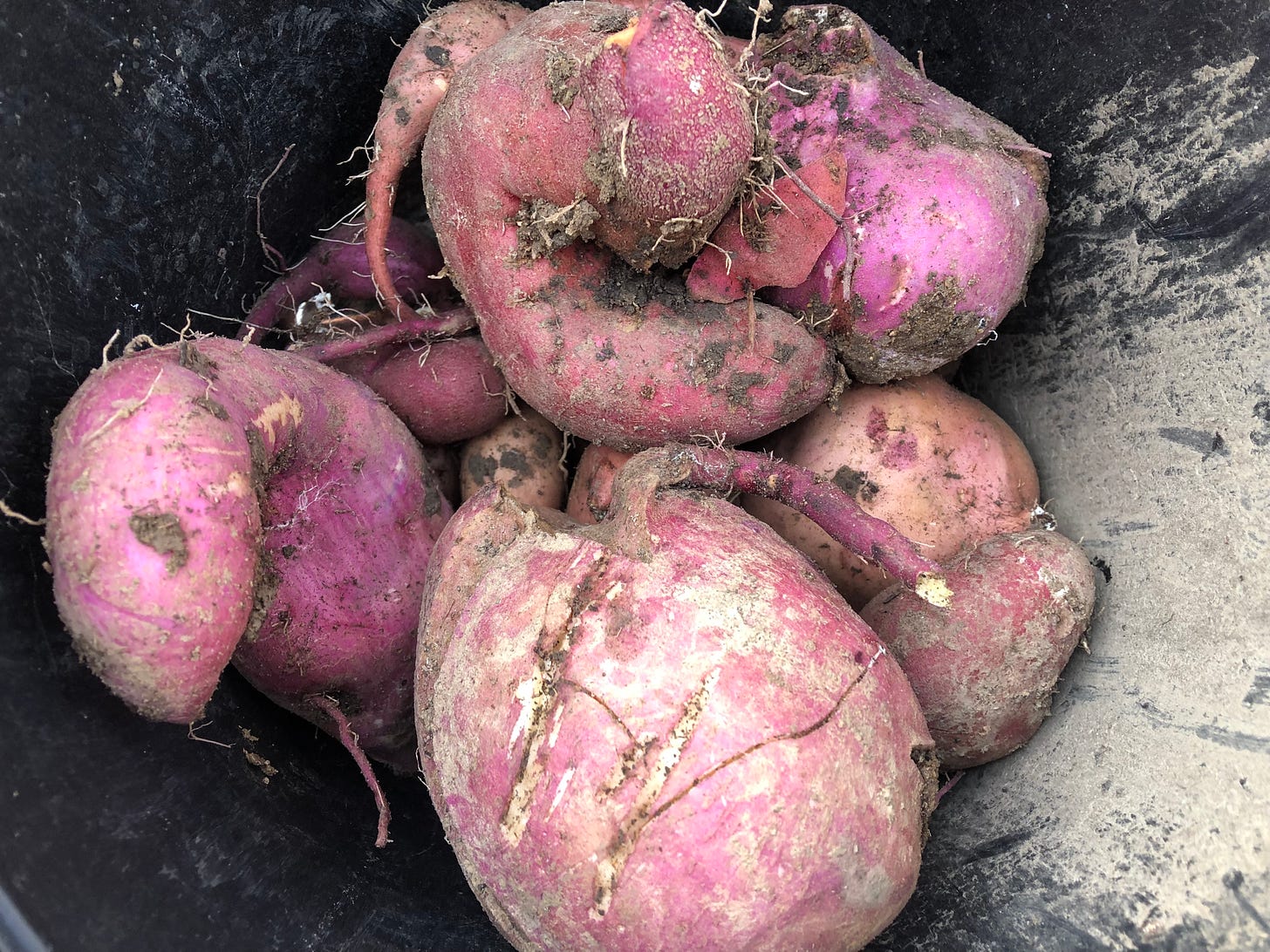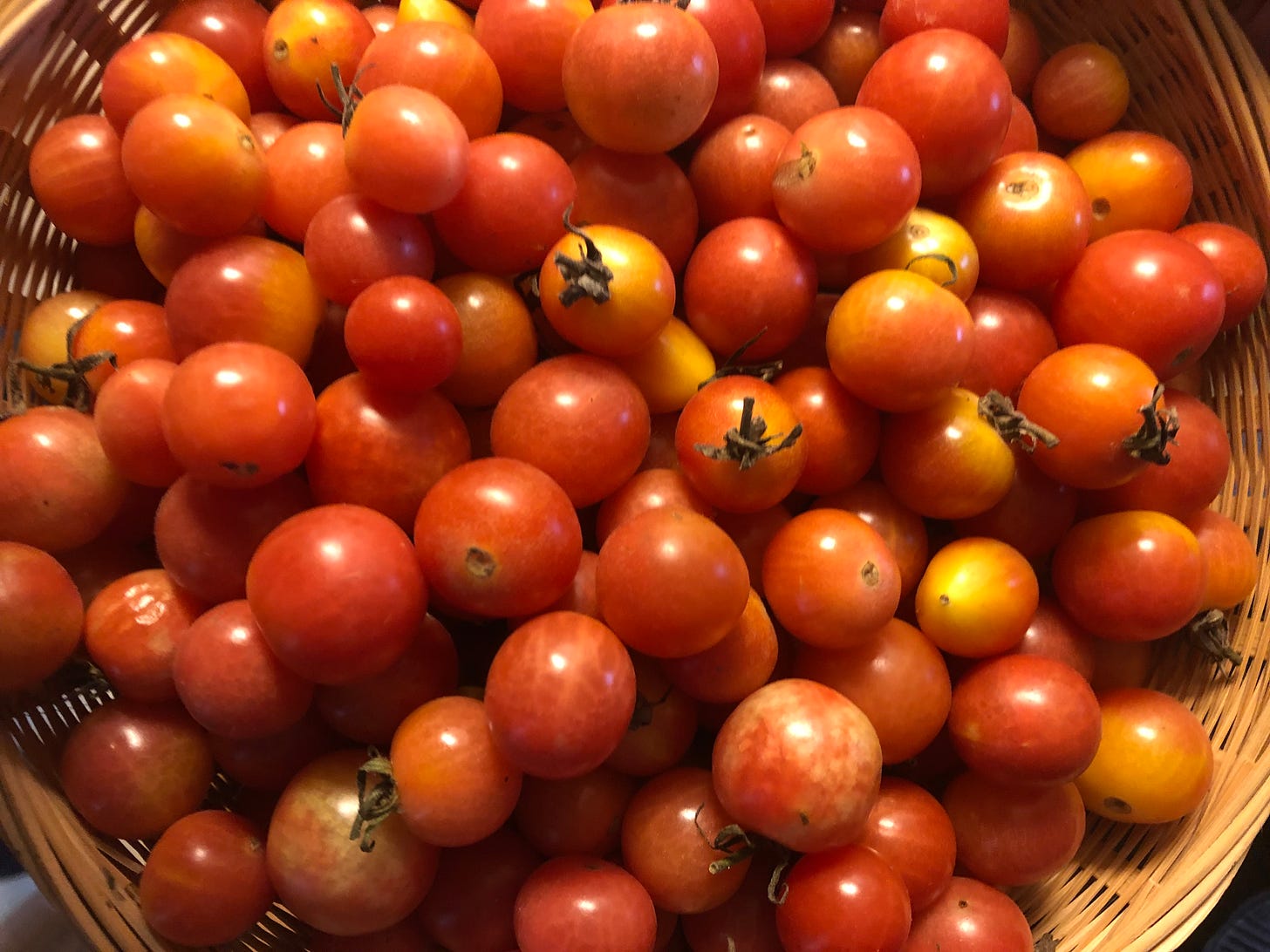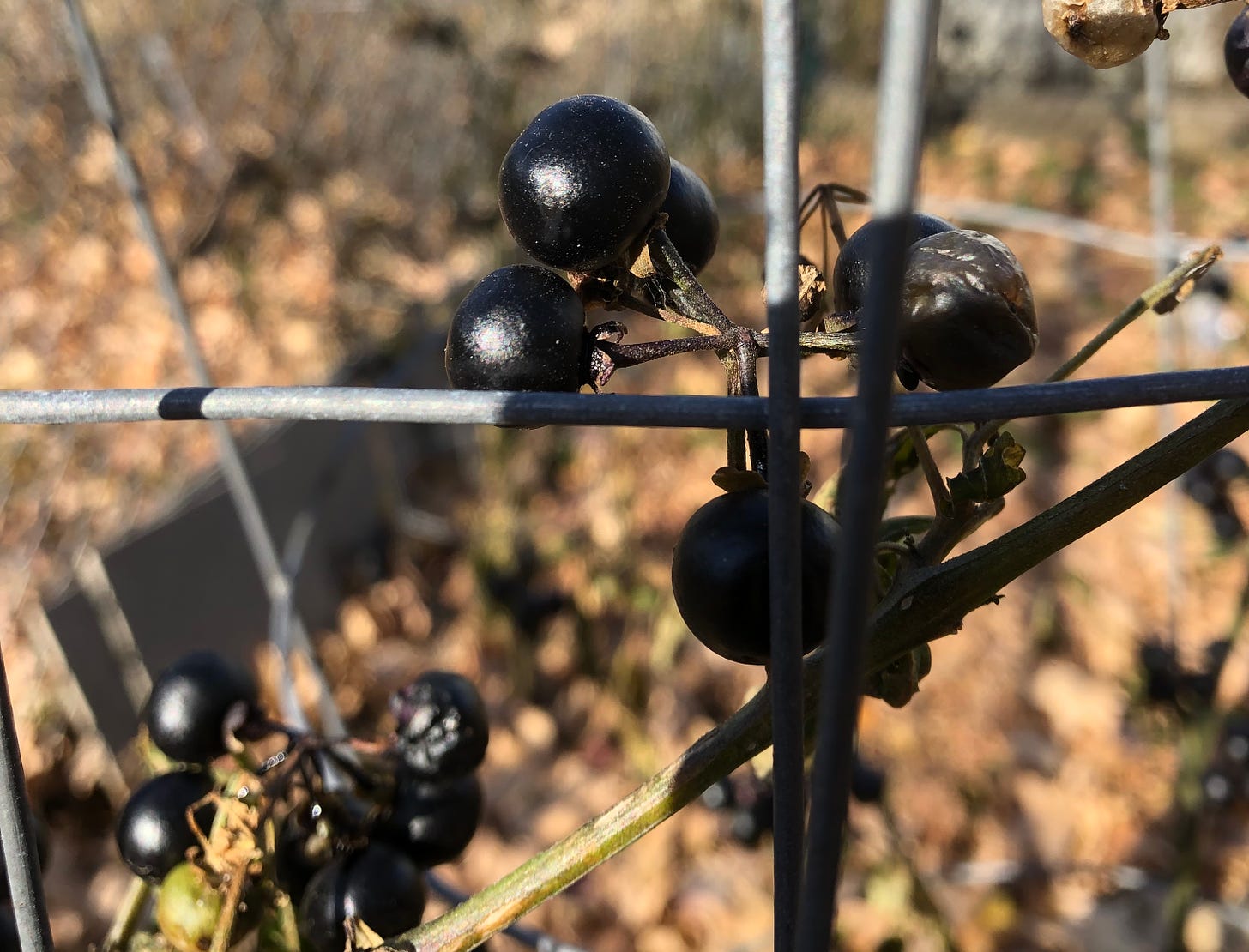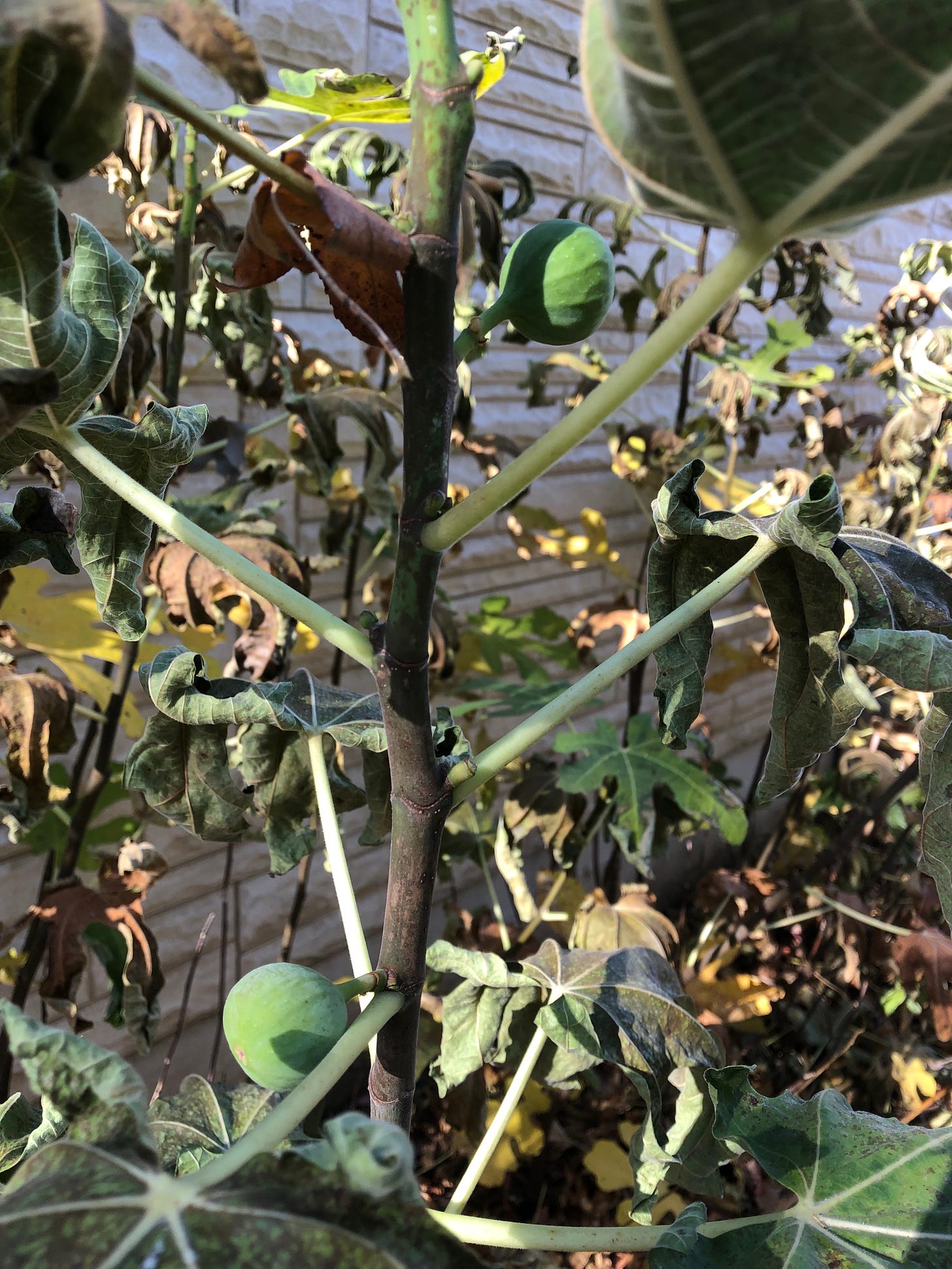I spent half the last fortnight in St. Louis, visiting my parents for Thanksgiving. We saw them in May on a convergent road trip to New Mexico, in those halcyon days between vax and Delta, but this is the first time I’ve been to STL since 2019. That visit was brief and it rained the whole time; we only left the house to see Knives Out. So this trip I was determined to show C the place that has been my home or half my home for 20 years.
Luckily the weather behaved and we arrived in that sweet spot when leaves were brightening and falling but the grass was still green. Which felt a little weird climate-wise, at least to my solastalgia-curdled brain, but made for lovely park walks and drive-by viewing of the city’s iconic brick neighborhoods. St. Louis has great brick. So great that in many blighted neighborhoods, thieves come and rip down the backs of whole buildings to ship the bricks off to Chicago and Louisiana. They leave the street-facing facades intact so police can cruise around without being arsed to do anything.
STL was and is one of the most segregated cities in America, with vastly different levels of attention and investment in housing and education for black and white neighborhoods. White flight in early-mid-20th hollowed out the region, creating dozens of dubiously chartered municipalities in St. Louis County, all of which tug the economic center of gravity away from downtown and toward upstart exurbs. St. Louis City was left a half-empty shell of its Worlds Fair greatness, a place that tens of thousands of suburbanites literally only visit to attend Cardinals games.
All of which gives STL city and county a patchy, scabbed-over feel. There are a handful of hip, walkable drags that everyone goes to, a bunch of unremarkable suburban commercial plazas, and big stretches of deindustrialized decay in between that nobody really thinks about. It’s got world-class cultural institutions——we visited the art museum, the one-of-a-kind City Museum, the botanical garden, the Arch, the new aquarium——and two minutes away will be deserted strip malls, half-derelict slums, and unreported Superfund sites.
Of course, these days excess empty commercial space is probably something you see almost everywhere, especially when you travel to a place that hasn’t frog-boiled you into unseeing the pandemic’s slow-but-deep economic damage. And there is of course development and revitalization happening in STL, but it’s uneven and full of contradictions.
The new aquarium——which C described as having “wholesome Bioshock vibes”——is part of such a project. Sometime in the last couple years developers and the city re-restuffed the shell of the old Union Station train depot, once the largest in the country, with restaurants, minigolf, a ropes course, a hotel, the headquarters of the Build-A-Bear Workshop corporation, and the aquarium. Probably an improvement on what it was a couple decades ago, but also an acquiescing to the broader decline of rail travel. If you want to catch an Amtrak out of downtown St. Louis, you gotta wait at a tiny, bus stop-esque shack under the freeway a couple hundred yards away; quite a step down from the beautiful, soaring Union Station of 100 years ago, a real crossroads of the nation. The aquarium is pretty cool (though it was about 40 percent screens), but even the Worlds Fair-heavy introductory video, featuring the voice of Affton-native John Goodman, seemed to imply that St. Louis’s best days were behind it.
Next to my parents’ subdivision used to be a wooded area that had belonged to the archdiocese, in anticipation that they’d need to keep growing the adjacent cemetery. But I guess the church doesn’t have enough people getting buried these days, because they’ve sold it off to developers who have cut down the trees and cleared the land to make way for new single-family homes. Ironically they call it “The Preserve.” The developer’s promises of including a “butterfly sanctuary and bee pollination area” sound a lot less impressive when you know what they bulldozed to make room. If only real-life solarpunk Molly Burhans had completed her map for The Vatican in time.
Listen to me, literally NIMBYing. Or NIMPBYing, I guess. But even on my most YIMBY days, I don’t know if I could square the circle of cutting down trees in the county to make room for designer homes with pre-landscaped yards, especially when there’s so much existing empty multi-unit housing stock in the city that would be beautiful if retrofitted.
Anyway, I’ve added a new feature to the newsletter down below: art from my personal collection. If you like what I’ve written above or the stories and notes I’ve shared below, I’d very much appreciate it if you shared solarshades.club with someone else who might enjoy it. And if you’ve found your way here without subscribing, here’s a handy button you can click.
The New-New
I have a flash piece out in this lovely-looking volume, City in a Wild Garden: Stories of the Nature of Cities, Volume 2. The book is a collection of top entrants in a contest that ran two years ago——which is basically another lifetime, given how different the pandemic age has felt. Anyway, glad to have my little multispecies parable included.
“The Painter and the Flatiron” is, like “The Mammoth Steps” and my on-hold novel project Zoo York City, primarily concerned with how we might share our civilization with other terrestrial beings. Basically: why shouldn’t we build a world where elephants can attend art school? This was an effort to play with some early ZYC worldbuilding, in a short, wholesome form. Here’s the opening bit:
As excited as I am to have this piece get printed, I’m more excited that C’s story “The City Incarnata” was also included in this book, and in fact won 3rd place in the contest! Here’s the opening of that one:
Works in Process
“Boomtown” —— Corey and I are putting the final polish on this piece, which still has too many ideas to comfortably fit in 5k words, with a couple more we’re still trying to squeeze in. It’s been vigorous rounds of tightening and re-filling in gaps. Nothing like working with a word limit to remind one just how many unnecessary words there are on the average page of prose. That pregnant glance, that winding turn of phrase, that uninspired filler detail: all sound perfectly reasonable when writing a novel but collapse and are easily forgotten when you need to purge 200 words. Deadline is tomorrow, but we should be about there by the time this newsletter goes out.
The Remainder —— no writing but I think I cracked my plot-block. As usual the answer was to give my characters more agency, more room to make bad decisions and then have bad things happen to them as a result. In our Hollywood-trained brains (as many books as I’ve read, I’m sure I’ve seen ten times as many movies), I think it’s easy to get a sense of what the climax of a story feels like——where it takes place, the weather, the emotional throughline——before we figure out what actually happens that’s climactic and why.
Ben and I got together to discuss my broader takes on his manuscript Drugs and American Capitalism. Nice to get to zoom out and think about what the whole text needs to be successful, after spending all that time fiddling with line edits and punctuation. I’m a little sad to see the project over. If you know anyone with a book they need editing that seems up my alley, do send them my way.
ICYMI
“A Priest, a Rabbi, and a Robot Walk Into a Bar” came out in Slate’s Future Tense Fiction two years ago this weekend. The series is partially edited by my friends at the ASU Center for Science and the Imagination. The particular spate of stories, of which this was the second, was commissioned as part of the AI Policy Futures project, which I worked on as a graduate researcher at CSI. There’s a great response essay from Slate religion writer Ruth Graham.
The germ of this story came from my sense that the prescriptions of increased diversity at tech companies as a way to combat AI bias were, while admirable, probably not enough. There are values questions at the heart of AI ethics that not everyone will agree on, especially when it comes to how AI voice agents present and talk to us. So I took a page out of Ted Chiang’s "The Lifecycle of Software Objects" to write a stretched-out story about a particular niche in the near-future tech industry: grooming AIs to be more culturally sensitive and meeting the AI needs of not-always-savory religious communities——for better or worse.
You can read more of my work via my website. If you’re a fan of the above, consider preordering my next book, Our Shared Storm: A Novel of Five Climate Futures, coming April 2022.
Art Collection
I’ve got a lot of art hanging up in my house, I’m proud to say. When I traveled more frequently, back in the beforetimes, I tried to buy prints as souvenirs everywhere I went. So I think I’m going to make it a regular feature of this newsletter to talk a bit about some of these pieces——at least until I run out.
The print above I picked up in Kathmandu in 2018. Unsure who the artist is; I can’t quite read the signature at the bottom, and this was the only piece like this at the shop. But I’m obsessed with the title: “Politics.” The way the figures are arguing yet intertwined, shoving and caressing, frozen silent in a noisy debate with ever-shifting terms and alliances. It’s one of the best representations I’ve ever seen of politics as the endless process of having to live together.
Material Reality
We got to STL right in time to enjoy some of the last harvest from my parents’ garden. They had figs, cherry tomatoes, huckleberries, dill, sage. Our first morning there C and I were recruited to help dig up a couple square meters of purple sweet potatoes, using pitchfork, shovel, and gloved hands to root around in the not-yet-frozen ground. My mom had planted the sweet potatoes mostly as a decorative cover crop for a tiny plotlet near the street, but nonetheless we pulled out a large bucketful of thick, pink tubers, which later got made into pie.
C and I were both a little startled at the soil we turned up: chunky and black and coursed with worms. Just effortlessly good soil, compared to what we have to work with back in Arizona. Barely needs watering, too. Good enough soil to make us wonder if we’ve been playing a sucker’s game with our endless composting, mixing grub-swarmed decay in with sun-pulverized dirt to make just enough almost-soil to fill our garden bags.
Night before our Thanksgiving, my mom told me a story about her childhood: how one summer her father had smooth-talked a university president into letting them look after his lakehouse in Ithaca, NY, while he went on holiday in Europe. It sounded like a pretty idyllic couple months, kind of a last hurrah of the whole family together before my mom’s oldest brother went off to college. With no garden demanding their time, the kids were free to run around so much their fat dog turned fast and lean. They’d take canoes out onto the lake to check on a big catfish that always sunned itself in the same spot. Their folks took the family on weekend adventures, touring a glass factory and trying with mixed success (due to misplacing the dog’s vax records) to cross over to Canada to see Niagara Falls.
Anyway, back home in Illinois they had left their garden to fallow for a season, covering it up with what they thought would be a nutritious mulch: chucked corn cobs. But when they returned home at the end of summer, they found their garden covered in a crop of volunteer field corn. Because apparently that’s the kind of thing that happens when you don’t live in a desert! Or so I grumbled at the time. But when C and I got home and checked on the health of our little bag garden, we found a cluster of thick sprouts crowding the green onions C had most recently planted. It took us a couple days to figure it out, but looks like some seeds from our roommates’ maggoty jack-o-lantern made it into the compost, which we then shoveled out a bit prematurely. So now it looks like we are going to have pumpkin, because, in small and precious ways, life does sometimes find a way.
Happy Thanksgiving. Here are some pics of the last of the Missouri bounty:

